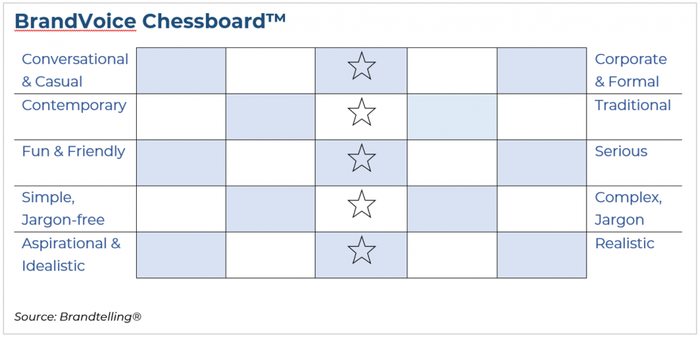Brand Storytelling: Find Your Authentic Voice in Three Easy StepsBrand Storytelling: Find Your Authentic Voice in Three Easy Steps
First you need to find your unique and differentiated brand voice.
February 8, 2023


Arthur Germain
There is no lack of articles about brand storytelling: what it is, why it’s necessary and why it can be a game-changer for your marketing. In my last article, “Why Your Business Needs Brand Storytelling Now More Than Ever,” I challenged IT channel partners to step up their marketing game through brand storytelling. What I want to do now is discuss how to share a strong brand story in your own voice. Why is this important? Your brand voice helps to establish an authentic tone for your communications and set expectations for success with your audience, including your partners, customers, employees and community.
Plus, the IT channel can be a noisy place. It’s tough to stand out if your brand voice is weak or sounds the same as everyone else.
Let’s start with two brand voice examples and then I’ll give you three easy steps, plus a simple tool I call the BrandVoice Chessboard™, that you can use to help determine your own brand voice.
Brand Voice Example: Steve Jobs
Steve Jobs was an iconic brand storyteller with a recognizable brand voice. Jobs was elegant, visionary and contrary. He’s still a tough act to follow more than a decade after his passing, but his is a great example of how a strong brand voice can create a new category and make a company stand out among well-known competitors.
Jobs lived his brand – elegant in presentation, customer-focused and contrarian. He was instantly recognizable in his black mock turtleneck shirts, jeans and boat shoes. He preferred clean user interfaces to complex displays, his products were customer-focused (it’s an iPhone, not a VendorNamePhone) and he loved to argue ‒ with everyone about everything. For Jobs, design didn’t follow function – it merged with it to form something entirely new.
Apple brand storytelling followed his lead. While Ed Roberts is credited with creating the “personal computer” category in 1975 when he launched the Altair 8800, Jobs took the idea and ran with it, crafting an entirely new category around “personal technology” that continues today.
Brand Voice Example: Harley-Davidson
A brand voice doesn’t need to be the vision and voice of an individual. It can be a collection of voices that resonate today. When you think about Harley-Davidson, the “voice” that comes to mind is probably the throaty sound of a motorcycle roaring down a highway. The original collaborators – William Harley and the Davidson brothers Arthur, Walter and William – shared a vision of building a motorized bicycle in the early 1900s. Within 20 years that vision was a reality, Harley-Davidson was the largest motorcycle manufacturer in the world.
That drive and determination lives today in the Harley-Davidson brand and brand voice. Brand style guides are usually the same: rules for using the logo, colors and typeface with some image guidelines as well. The Harley-Davidson brand style guide stands apart and begins with this statement:
“Harley-Davidson logos and trademarks symbolize more than just the quality and heritage of our products. They stand for something important enough that people tattoo them on their skin. It’s something that can’t easily be expressed with words but is felt in the soul. For many, ‘Harley-Davidson’ isn’t a name or a brand. It’s a way of life”.
That’s a brand voice! It’s strong, confident and independent. Brand evangelists will pay a premium to drive, wear and attend events for this brand – loud and prou
Three Steps for Finding and Sharing Your Own Brand Voice
Take a moment, go to your company website and read the About Us statement. Here is a typical statement from an MSP website: MSPName is a full-service technology company, providing technical and digital solutions for your business.
That could be anyone, right? The challenge is that these types of statements are often so similar or bland that you could replace one company name with a name from another industry and it could still read the same. How does your own statement fare? If you were to exchange your company name with a competitor’s would the statement still sound authentic?
Instead, follow this three-step process to find your own unique and authentic voice:
Listen to yourself.
Listen to your customers and other stakeholders.
Listen to your team.
Step 1. Listen to yourself.
As the leader of your technology brand, you are the person most aware of a number of factors that comprise your brand voice. You know why you started or joined the company. You know what values and benefits the company provides to partners, customers and employees. You know where you want to take the company and what you want to achieve. And most importantly, you know how you want to sound and how you want to be heard. These are all important parts of creating the foundation for your brand voice.
Listen to how you describe your partners. Are they partners, vendors or strategic alliances? None of these are wrong, they’re just different ways to describe your relationship. The same is true about your customer, client or end user. When it comes to employees, some companies refer to them as employees, staff, team members or associates.
Listen to how you describe the products, services, solutions and benefits you provide. What terms feel most authentic and what phrases feel like you’re making a stretch when describing who you are, what you do and what type of relationships you have in your business?
When you speak in an authentic voice, your audience will be able to feel the difference. They will sense that you are not trying to be someone you’re not. Instead, they will feel like they know who you really are and can trust what comes next because what you are saying feels authentic to them too.
Step 2. Listen to your customers and other stakeholders.
In order to connect with your audience in your brand voice, you need to speak about what concerns them and make yourself relevant to them. This requires listening closely to your customers to hear how they describe themselves, their challenges and your company.
For example, do they describe you as a vendor, provider or partner? I know you want them to call you a “trusted advisor,” but that’s like wanting someone to say you’re a good guy. It’s ok to want it, but you can’t make someone call you by that phrase.
What challenges are they experiencing – in their own words? Often, we use our technical language, acronyms and jargon to describe what we do and how we can help. But our clients may be using different language. There is an old adage that says if all you have is a hammer, everything looks like a nail. That’s often what I think when I visit technology firm websites – they can’t decide whether they’re selling products, services or solutions so they use language they understand instead of messages their customers would understand.
Another group to listen to is your vendor partners. How do they describe you and your relationship? How do they describe their relationship with your joint customers? How will this be reflected in the brand voice that you use to describe your company and your place in the channel?
Step 3: Listen to your team.
Your team is often the closest to your clients. Your sales team, your customer service team, your sales engineers – these groups are on the phone or face to face with your customers and your vendor partners on a daily basis. They hear what people say about your company and your competitors. If you are going to create a new category – like Steve Jobs did with personal technology – you need to listen to what your own employees are saying.
One of the most often discussed challenges in marketing circles is “bridging the gap between sales and marketing.” There are books, videos, webinars and in-person workshops that drive this point home. There would be no gap if both groups actively listened to the other and collaborated to speak in a single brand voice. The marketing team that crafts “message matrixes” and “sales battlecards” without ever listening to their sales teams are always going to have a challenge developing a strong and unified brand voice and brand story.
Using the BrandVoice Chessboard to Establish Tone of Voice
One of the tools that I have developed to help create a strong brand voice is what I call the BrandVoice Chessboard™. It’s something you can use during each of the three steps above to decide what type of brand voice you want to represent your company.

Select where you believe your brand voice should be for each opposing category scale on the board below. Do you, your team and customers speak in a casual brand voice or one that’s more formal? If your company is called Geek Guys you are probably going to be more casual and conversational than if your company is called The Legal Technology Support Team.
It’s difficult to avoid acronyms – they’re all around us in this industry. However, you can make a conscious decision based on what you have heard during your listening exercises as to whether you are going to speak in a voice that is all jargon – your customers are devsecops programmers who all came from waterfall and do agile today – or you are going to carefully spell out your acronyms on first reference and then use them sparingly elsewhere in your website copy and sales presentations.
Finding your authentic brand voice is the best way to share a strong brand story that your audience can remember and repeat. Don’t use a voice that sounds like the competition or one of your vendors. Your own, confident brand voice is the best way to connect with customers, employees, investors and other stakeholders in an authentic way that resonates with them on a human level.
Arthur Germain is the principal and chief brandteller at Brandtelling. Follow him on LinkedIn.
About the Author
You May Also Like


